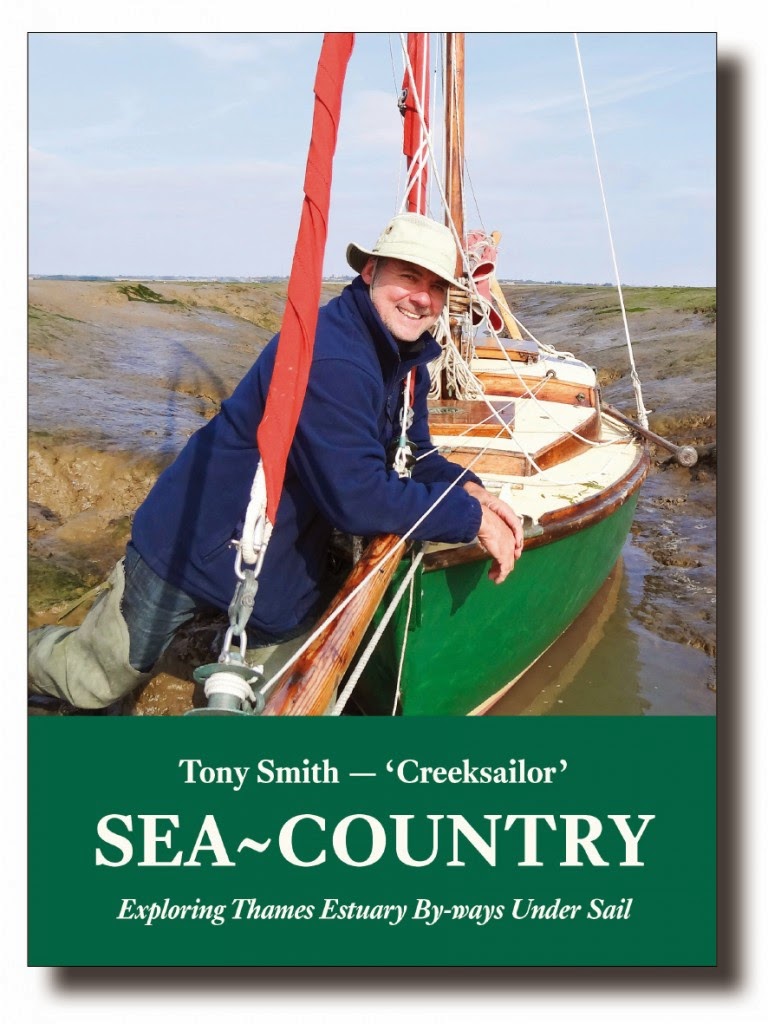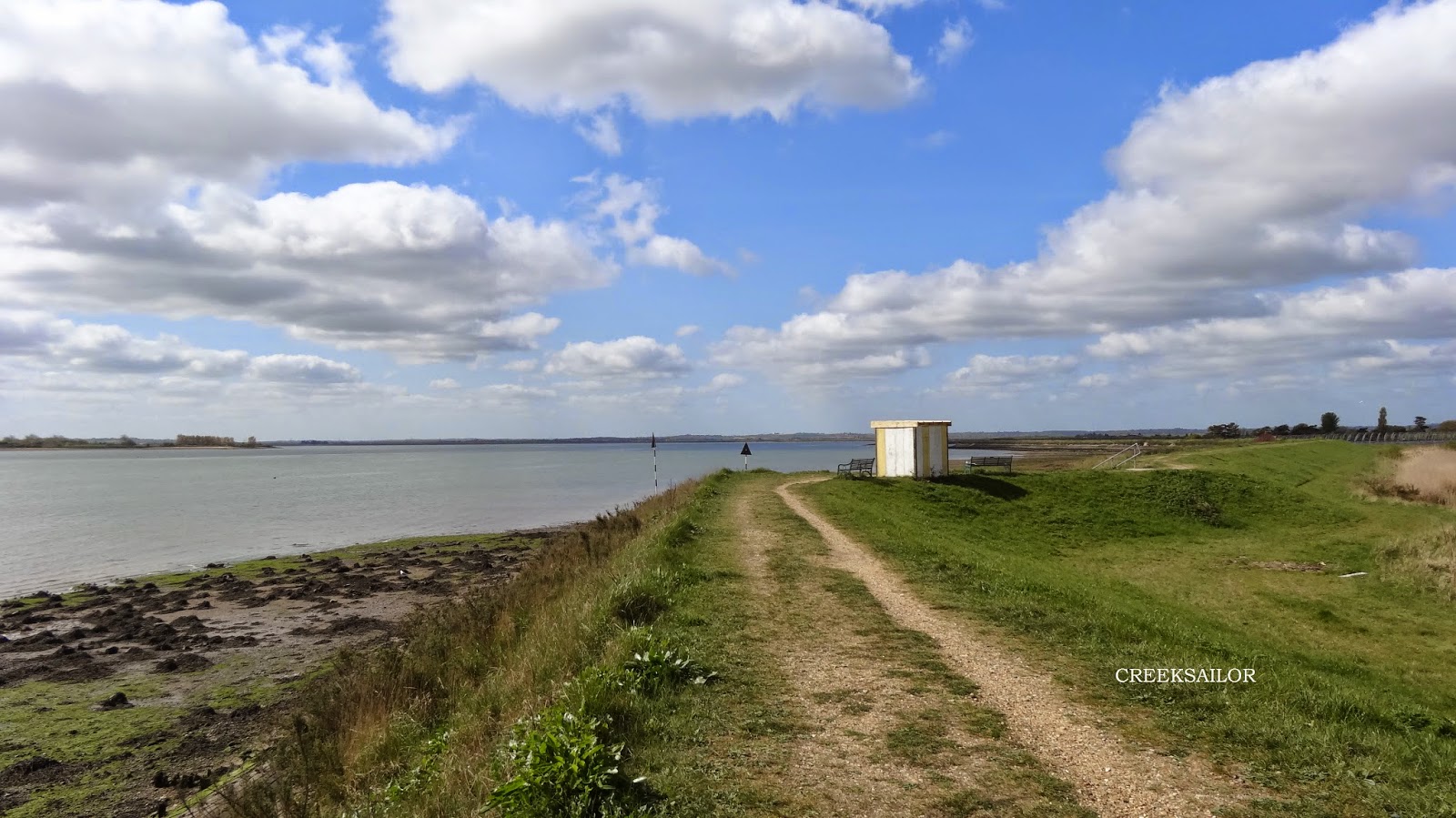Part Of The ‘Creeksailor’s essentials toolkit’ for Thames Estuary creek-crawling are a pair of sea boots.
Sea boots come in all shapes and sizes and, on the whole, keep us dry or mud free when having to traverse a patch of mud, shingle or marsh to get to or from the boat while cruising. This is something quite different from a pair of yachting or dinghy boots that are designed to keep feet dry and at the same time give good grip while on a boat.
Cruising
My own cruising footwear has gone through an evolutionary phase through trial, error and necessity. The results may be a refreshing surprise to those who are caught up in the midst of an age of technical garb being produced for sailors who can meet the requirements on the mortgage forms to pay for it. In light of all the money we could be spending on cruising wear perhaps we should be thankful that during the warmer summer months we can get away without using any footwear at all, choosing instead to go wading through a patch of mud bare-legged, in the knowledge everything wet dries off in no time - I don’t choose to do this bare footed just in case I cut myself on a buried shell, or who knows what else, but in colder climates it’s important to try and stay dry if at all possible. Anyone who’s been drenched and away from a dry change of clothes will know how much water increases the chill factor - single-handed and alone morale could soon follow; therefore it makes sense for the cruising man or woman to operate with this in mind.
What Type of Boot
The type of boots used for general dinghy sailing, and those which I have tried in the past, have a fine plimsoll-type rubber sole and can make do. But I found these were not quite up to the job of shoal cruising where more durable footwear, one that has to withstand the suction and sink of East Coast ooze, is called for. The dinghy boots I had worn were certainly light enough and, with go fast stripes or a yellow flash, looked the part while hanging around the tender boat rack down at the yacht club, but were definitely not long enough to stay dry in. They had a worthy rubber sole, moulded with good grip, but picked up pieces of grit from every step taken on mud or a beach which then ended up being trodden all over the boat, and that is after rinsing off any mud. Not something you want to encourage on GRP or finished paintwork surfaces.
Basic Wellies
For creek cruising, the knee length of the boot is all important too as this is what determines the depth you can comfortably wade about in without getting a boot full of water. Technical garb, and thus unloading heavy amounts of cash, is unnecessary for the creek cruiser. For he or she, the basic rubber wellington, much loved and used by farmers throughout Britain, serve well for most situations the active small boat skipper will come across including any canal work you are likely to undertake in the boat. In use they are light enough, flexible and easy to stow away, and in my own case, the rubber soles work well on Shoal Waters teak cockpit floor-boards and her painted decks which has the ‘all important’ added sand for grip. They are cheap to buy and are universally available in green or black colours. I’ve found it is worth spending a little more cash, still relatively cheap for a quality brand like Argyle, the cheaper brand made for farmers by the ‘Hunter’ brand of wellies, where the rubber is purer and thus suppler and lasts longer than the substitute mix used to produce inferior, harder and more plastic-type wellies that seem to be more susceptible to the combined damaging effects of sea water and UVB given off by sunlight. I’ve had a couple of pairs of these plastic type boots that developed cracks and split during the first seasons use. For very infrequent use anything will make do, of course, and theoretically a cheap pair could last a number of years but I’ve found the knee length Argyls, also known traditionally as Bullseye Hood at £30.00-ish when last purchased, are a decent bit of kit that, subject to the heavy abuse of the marine environment i.e. salt water, mud, UV rays, scuffs, scrapes, bending, folding and other general heavy wear associated with climbing over splintered shipwrecks; have at least two or three years of life in them.
![]()
Thigh Waders
The old chestnut of the outdoor footwear, and ‘fisherman’s favourite’, is also one of mine. For the owner of a boat on a mud-mooring who uses knee high wellies to walk out to the boat, donning a pair of these guarantee half hour extra sailing and you could still be able to walk ashore dry. Other pluses of wearing waders are there’s more scope to move around while longshoring with boat ‘in tow’ without getting a wellie-full of green. They are great for dinghy work or punting, and when in the cruiser you can dry out further from the marsh or beach and get ashore sooner if you would like to. And, tender dinghies may well become redundant when using a pair of waders. The down side of waders, I feel, is at approximately £50.00 a time for a cheaper brand they might only last a season without having to patch them up, if not stored properly, and to get the most life out of them they must be stored without creasing. I can do this at home where there is room in the garage to hang them upside down, but in a tiny boat with minimal space one has to compromise and therefore folding is unavoidable. I have a pair of thigh waders in their third year of commission that have more holes in them than a Tetley teabag. The other negative of waders is if you do take a welly-full it will be a ‘big-un’ likely to hamper movement, and if you would have to resort to any swimming i.e. if you happen to slip over – good luck! ![]() |
| Thigh wading through creek gore |
Chest Waders
Now, I don’t see many boaters, and especially yachtsmen, using these to go cruising in on the East Coast. But it is, perhaps, a different story down south in places like Christchurch Harbour, where I’ve holidayed on numerous occasions. It’s a shallow estuary with a mixture of mud, sand and shingle beach areas, not unlike those we encounter in many creeks and inlets here in the Thames Estuary. The tide there has a double stand and therefore the shoal draft ribs, a popular choice of boat there, can float in a few feet for hours. During my stay I had watched these boats come and go on many occasions and noticed most of the skippers using chest waders to plough a way ashore after dropping anchor and thought that in many instances I end up in the same scenario and could see the application for East Coast creek sailing. But it took a while, years in fact, for me to act on because I thought they were too bulky and would take too much time putting on, therefore I had resisted investing in a pair. Until that is a pair of were gifted to me by my pal Brian who has been using them to launch his boat for a number of years. The reason being I help launch and recover his boat each season and no matter what footwear I donned always ended up wet up to my waist. I don’t mind this at all though as no matter how hard we may try to avoid it, getting wet now and again that is, it’s all part of boating I reasoned. But feeling sorry for me he was adamant a pair of these would look after me better next time.
I kept them in the garage, only airing them for punting expeditions during the winter season but never used them for boarding my cruiser Shoal Waters. Besides, my favored green waders were still holding up with the Sikaflex repairs and cycle inner-tube puncture patches I had made fast on the leaking splits that had emerged from folding them away. And I prefer waders as they are just as easy as knee high wellies to put on and you can fold them down to free up the knee and walk freely. For the punt cruising I was doing I found the chest waders were an ideal alternative for the job. The boots fit well and give excellent grip and the neoprene is not only waterproof but warm, soft and flexible as a piece of clothing so if you lay in the punt and any water gets in it’s not a problem. I’ve been using them for getting out to Shoal Waters more this year than last and have found they give another level of flexibility with regards to the tidal access than I had experienced with the thigh waders. They roll up to a far more compact size than perhaps you would imagine and are therefore as easy to be stored out the way as are a pair of waders or knee high wellies. They have proved themselves in use as the wait is around 2.5 hours from high water until you can safely walk ashore but I came home one night from a cruise and the wind dropped off but I still managed to crawl over the ebb to reach my mooring buoy an hour after high water. Half hour later, and in darkness, I waded through 4 and half feet of water to shore, bone dry. They fold up easily and are very light and to date, late in their second seasons use, have not suffered the cracking associated with normal wellies.
There are many benefits with using a pair of chest waders and perhaps the worst possible scenario of any negatives would be to go under and ship a chest full of water...
At £40 – £70 chest waders are great for boat launching and generally any boat handling where one has to ‘step in’.
![]() |
| chest waders in use launching the boat |
Comfort
The comfort fitting of footwear is a personal matter but I prefer a size bigger. In wellies it means one boot can be left behind in a suction of mud if you are not careful when traversing the deeper goo. But this is far outweighed by the plus point; they are easy to remove when you reach the boat. I simply slide in and out of mine and leave them standing upright in their own mudprint.
To wade or not to wade? Whatever your preference may be, take extreme care when out on the water, always respect the muds and father Neptune’s tides and remember to wear a suitable buoyancy aid or life-jacket in deep water.
Good wading, and sailing, Tony Smith
























